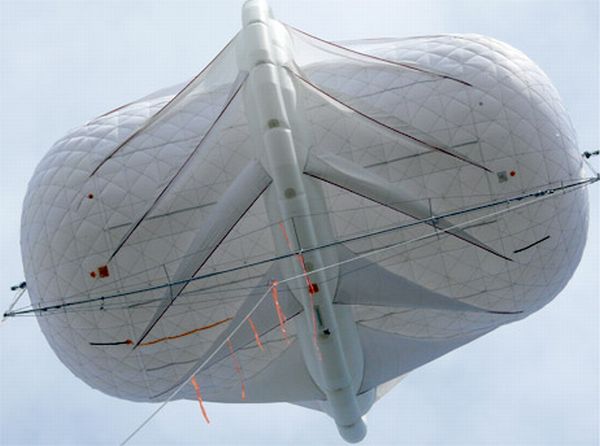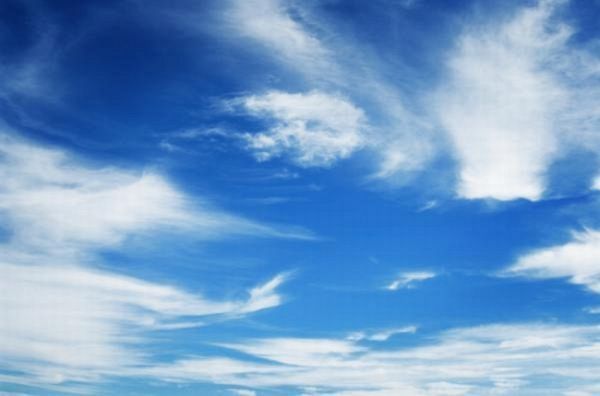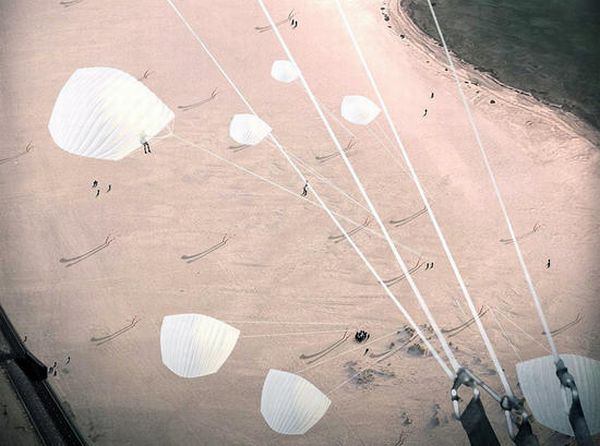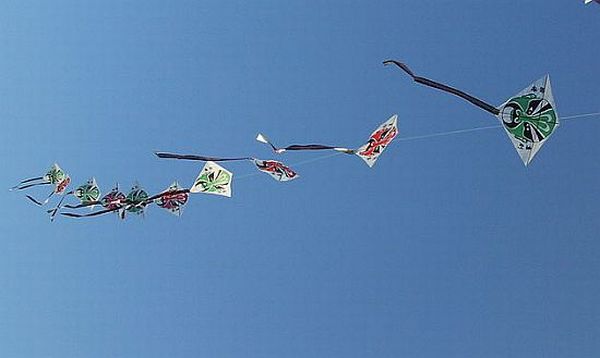
What’s happening right now?
Wind power has already made its way into the pantheon of renewable energy sources as it’s clearly exhibited by the following numbers, which says that by the end of July, 2010, worldwide nameplate capacity of wind-powered generators was 175 GW. Now compare this to total capacity in the year 2000, which was only 17.4 GW. Energy production was 340 TWh by 2010, which is about 2 percent of worldwide electricity usage and has doubled in the past three years. Well, this is all well and good, except for the fact that electricity generated from wind power can be highly variable at several different timescales: from hour to hour, daily, and even seasonally. In response to this type of variation, now we are looking forth to integrate systems that can harness winds at much higher altitudes.
Trends:
1. MARS – A wind turbine that is up in air

At the first instance, it may look like a giant blimp, but in actuality MARS (Magenn Air Rotor System) is a lighter-than-air tethered wind turbine that rotates about a horizontal axis in response to wind, generating clean electrical energy. The inflated system uses a three dimensional structure (unlike the two dimensional blades of conventional turbines) kept afloat in the air by helium. The mechanism can harness winds at a level of 600 ft to 1000ft and even nocturnal jet streams, while the resultant energy captured is transferred down to earth by 1000ft long tether cables.
2. Joby Energy tests high-altitude wind turbine prototype

A prototype by Joby Energy epitomizes innovation at its best. Basically a flying platform with an array of wind propellers (much like an aircraft without cockpit), the propellers lift up the contraption to a certain level, and once steadily deployed in the air, the whole system moves in rapid circular motion. This motion pattern maximizes the face exposure to wind streams, thus allowing it to collect the energy and transmitting it back to the surface by use of cables. The system has a capacity of 30 KW, but if successful, the company could even manufacture a 100 KW version.
3. Energy starved New York could soon get powered by jet stream winds

Jet streams can be described as fast flowing, narrow air currents found in the atmospheres of some planets, including Earth. Now researchers from Carnegie Institution and California State University have identified New York City as one of those locations that have the potential to immensely benefit from harnessing energy from jet streams. Basically the system calls for energy harnessing kites to be flown high up at an altitude of more than 30,000 ft, where they can transfer the collected energy from the existing jet streams back to the earth by their tethered cables. If the system works successfully, then according to the scientists it can produce ten times more energy as conventional wind turbines, with more than 400 MW of electricity generation.
4. Kite farm offers parasailing while producing energy for the adventurous sort

Imagine you are parasailing over the deep blue sea, with your adrenaline pumping high and the glorious wind waving at your visage, but on a different system, the whole world is benefiting from your little tryst with adventure. Now that would be good feeling, and that is exactly what Colombian landscape architecture studio Paisajes Emergentes plans on doing. The proposition calls for an energy generating kite farm, on a public beach, in Abu Dhabi, under the Land Art Generator Initiative. There would be around 200 kites tethered across a 60-meter grid of flexible posts, and with an advanced wind belt generator, each of them (the kites) can produce roughly 6,200 kilowatt-hours a year, which is enough to power three energy-efficient homes. So in a modest estimate, this innovative ‘adventure’ wind farm can power around 600 homes!
5. Makani Power to develop energy harvesting kites

California-based high altitude wind company Makani Power wants to develop a 1MW prototype of an energy-harvesting kite, which can be flown at high altitudes of more than 600 m (20,000 ft). Such kites can make use of steadier wind velocities to generate more power than conventional wind turbines. Moreover, to add to that ‘sci-fi’ flavor, robots will fly these kites while enabling them to keep afloat for a longer period.
6. NASA researchers envisions airborne wind turbines for renewable energy

In NASA’s reverie, wind turbines would not take up earth’s spaces, but rather ‘float’ in the free space above earth. NASA aerospace engineer Mark Moore believes that the idea in itself has great potential, as wind speed is more consistent and its velocity much higher and steadier at higher altitudes. The resultant energy can be transmitted back to earth via nanotube cables.
The concept:
We have already talked about the variations in magnitude of wind energy that we can come across while harnessing it at surface level. In order to counter these variations, many ingeniously conceived technologies look forth to incorporate mechanisms that can harness winds at higher altitudes, as wind at this height becomes steadier, more persistent, and of higher velocity. Moreover, theoretically the power available in wind increases according to the cube of velocity (the velocity-cubed law), hence assuming other parameters remaining the same, doubling a wind’s velocity gives us 2x2x2=8 times the power (or thrice velocity gives us 27 times the power). Known as high altitude wind power (HAWP), the mechanisms involve capturing the power of winds high in the sky and transmitting it back to earth surface by use of tether and cable technology.
The advantages:
We already know that the wind energy generated at high altitudes can be multiple times the magnitude of the energy generated at ground level. However, other than that, such technologies would totally forego the usage of comparatively costly, cumbersome and easily damageable ground wind turbines. That in effect would also nullify the adverse conditions of noise pollution and even the visual burden on natural landscaping, all of which are generally associated with conventional wind turbines.
The impact:
Statistically, we have already seen the rise of the capacity of wind power by 10 times in the last 10 years. Now considering HAWP technologies are still at their nascent stage, and given their enormous potential, we certainly have a great chance to witness an exponential increase in wind power output, once the system advances beyond its present state. Like California-based HAWP company, Makani Power believes that capturing a small fraction of the global high altitude wind energy would be sufficient to power the entire planet!




